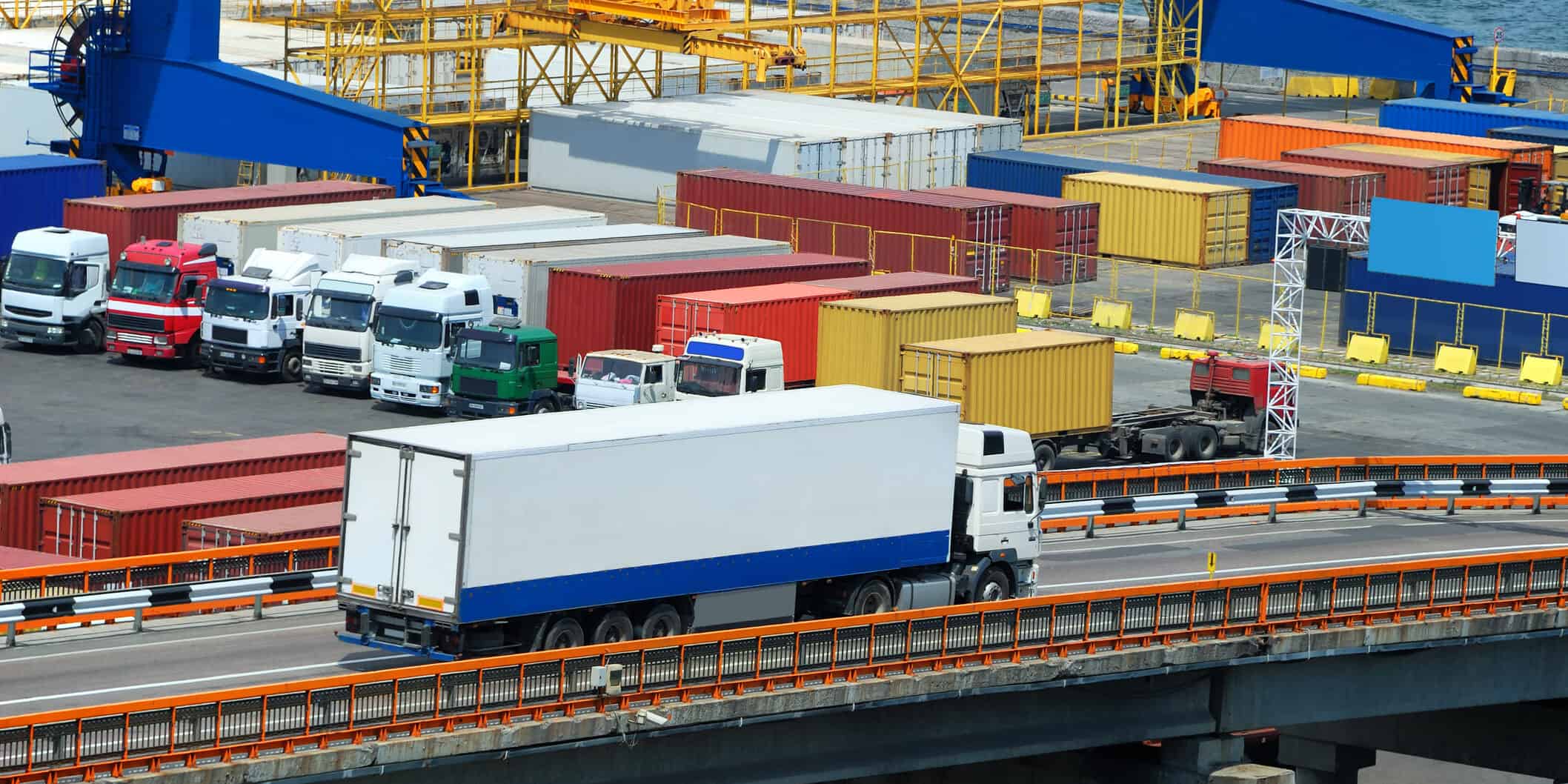If you are looking to expand your business to Central America, exporting to Guatemala presents many opportunities.
It is the largest economy in Central America and one of the most stable in Latin America. It benefits from various economic unions, welcomes foreign investment, and has a large, youthful population.
Latin American Cargo has extensive knowledge and experience in Guatemala’s business culture and customs processes. We have put together this guide to help you understand your potential new market.
Business opportunities to consider when exporting to Guatemala
Guatemala is attractive to exporters for many reasons
Guatemala’s geographical location, customs unions, competitive market, and thirst for foreign trade and investment make it a potentially lucrative market.
Guatemala is Central America’s largest economy. It has a Gross Domestic Product (GDP) of $76.7 billion (2019) and an average growth rate of 3.5% – one of the most stable in Latin America.
Guatemala’s Free Trade Agreements
As an importer, you may benefit from various customs unions and economic partnerships:
- The most significant is the CAFTA-DR free trade agreement between the U.S. – Guatemala’s largest trading partner – and several Central American countries. It aims to ease the process, eliminating tariffs on most imports. Excessive customs bureaucracy on entry may cause import delays, but this is being addressed.
- Another significant partnership is the Central American Customs Union (UAC) between Guatemala, Honduras, and El Salvador. It was created in 2017 to permit the free flow of goods between the three countries, by removing barriers to trade, tariffs, and quotas. The UAC supports the shared ambition of the Northern Triangle countries to be a world-class logistics hub, ready to supply all the important markets in the Americas.
- Also, it is interesting to observe that by neighboring Mexico, Guatemala has ready access to a large, diverse market. And it can, by association, benefit from the separate free trade agreement Mexico has with the U.S. and Canada (USMCA).
Key sectors for exports to Guatemala
If you are a U.S. exporter, you may have a market advantage as Guatemala values U.S. brands for their quality and aftersales support.
Key sectors for opportunity include infrastructure, transport, and power generation, with Guatemala being the leading electricity exporter in Central America. There is also a keen interest in apparel and its associated brand roll-out.
Top exports to Guatemala
Fuels and manufactured goods dominate the country’s imports. This contrasts with Guatemala’s more traditional food-based exports, such as bananas, spices, and coffee.
These were the top exports to Guatemala in 2021, according to the United Nations COMTRADE database, compiled by Trading Economics:
- Mineral fuels (e.g.refined petroleum) ($4 billion)
- Electrical machinery and electronic equipment ($2.1 billion)
- Motor vehicles ($2 billion)
- Machinery ($2 billion)
- Plastics ($1.7 billion)
- Iron and steel ($1.3 billion)
- Medicinal and pharmaceutical products ($920 million)
- Paper and articles of pulp ($812 million)
- Cereals ($679 million)
- Prepared food ($528 million)
The USA – Guatemala’s biggest trading partner – was responsible for a third (33%) of all the country’s imports in 2021, totaling $8.73bn. Consequently, the U.S. Department of Commerce estimates that U.S. goods imports alone support approximately 25,000 jobs in Guatemala.
Interestingly, in 2020, Guatemala was the world’s biggest importer of iron ingots ($54.4m).
Challenges to consider when exporting to Guatemala
Guatemala has the largest economy in Central America and one of the most stable in Latin America, but it is not without its challenges. You will need to be aware of:
- Corruption and transparency issues, with allegations of unfair treatment against U.S. companies
- A weak administrative and judicial system, reportedly inconsistent, time-consuming and lacking clarity
- Low government expenditure impacting transport and other infrastructure
- Deep socio-economic divisions, high crime rates, and labor rights abuses
- Barriers to preferential CAFTA-DR tariffs. This can be due to The Guatemalan Tax and Customs Authority (SAT) challenging the validity of Certificate of Origin and classification.
- Accusations from the SAT towards importers allegedly under-declaring the value of their products. Product revaluation can result in delays and additional value-added taxes (VAT). There have, however, been recent improvements to the process, including a 48-hours on-bond release and valuation analysis after importation.
Import restrictions and prohibitions
Restrictions on imports into Guatemala are generally not as extensive as in other Latin American countries, but there are several key ones:
- High-powered weapons, military weapons, and hardware, except those for use by the Guatemalan government.
- Pseudoephedrine (a decongestant and stimulant) or any pharmaceutical products containing it.
- Certain plant pesticides.
Before embarking on any business ventures, check with a customs broker that your goods are allowed to be imported into Guatemala.

Located on the Atlantic Coast, Santo Tomas de Castilla is the principal port of Guatemala and the biggest container terminal in the country.
Export to Guatemala: Customs clearance
If you already do business in Central America, the customs procedures for Guatemala should be familiar.
They are harmonized under the Central American Uniform Customs code, meaning you benefit from uniform documents and electronic transactions.
But there are specific challenges related to importing into Guatemala – challenges that Latin American Cargo has the experience to support you through.
While there have been changes made by the Guatemalan Tax and Customs Authority (SAT) to improve and streamline customs procedures, you may still face setbacks in accessing preferential tariffs or reaching the market quickly.
Depending on your product, there may be extra documentation requirements. And they may be complex. Make sure you factor this into your planning.
Customs Duties
Understanding customs duties for Guatemala will be crucial for you in deciding whether to enter the market or not.
If you are a U.S. exporter, you will benefit from the CAFTA-DR free trade agreement that allows more than 80% of industrial and consumer goods enter duty-free. The remaining tariffs are due to be phased out by 2026.
Encouragingly, 98% of U.S. agricultural products already have zero tariffs. If you are an exporter of yarn, textiles, or apparel goods, there are significant opportunities; nearly all are duty-free and quota-free if they satisfy the rules of origin.
Any remaining industrial goods – and most agricultural products – have tariffs of 15% or below. But there are exceptions, with tariffs of up to 40% for alcoholic beverages and up to 20% for tobacco cigarettes, some vehicles, and firearms. The average applied rate on all products is approximately 2.4%.
You will need to be aware of quotas on certain agricultural products. Some have already been abolished, and others will be phased out in the next few years.
Tariff-Rate Quotas (TRQs) apply to 12 products, including rough rice, white rice, beef, ice cream, milk, white corn, butter, cheese, and other dairy products. The rice TRQ will phase out in 2023 and powdered milk in 2025.
Visit the Tax and Customs Authority (SAT) website to get more information about customs duties.
Imports requirements and documentations
The documentation needed to import to Guatemala can be complex, depending on the product and country of origin. The U.S. International Trade Administration has much helpful information, which we summarize below.
Food products
These apply to all food products – animal, vegetable, fresh, or processed.
- Certificate of Origin for Sanitary Purposes:
- Fresh plant food products – a plant health certificate (phytosanitary certificate) issued by APHIS.
- Fresh or processed meat products – a sanitary certificate issued in the U.S. by the Food Safety Inspection Service.
- Eggs, egg products, milk, and dairy – an Agricultural Marketing Service Export Certificate (AMS).
- Seafood – a National Oceanographic and Atmospheric Agency (NOAA) seafood and fisheries Export Certificate.
- Non-meat processed food products – a State-Issued Certificate of Free Sale or Food and Drugs Administration (FDA) export certificate.
- Import permits for processed meat and associated products from the Guatemalan Ministry of Agriculture, Livestock, and Feed (MAGA) and the Guatemalan Ministry of Public Health and Social Assistance (MSPAS)
- Commercial invoice
- Bill of lading
- Certification of Origin for customs and tariff purposes.
- Re-Export Certificate if the product is re-exported from the country.
There are also additional requirements you will need to take into consideration when exporting foodstuffs to Guatemala:
- All food imports require product registration by the Ministry of Public Health and Social Assistance (MSPAS).
- There are technical regulations for packaging and labeling liquors and spirits, approved additives, infant food, sanitary license, and registration of products. The rules are the same across Central America, but they are implemented differently. More detail about U.S. imports is available in this export certificate report.
- Spanish-language labeling is required for imported food products. It needs to include the product name, list of ingredients, and nutritional label if relevant. Stickers can be used but must not block the front of the package, the ingredients list, or preparation instructions.
Meanwhile, if you are looking to export chemicals used in agriculture, you will need to consult with the Technical Directorate of Plant Health of MAGA. It keeps a list of pesticides not permitted in Guatemala. All pesticides must be registered with Plant Health.
Medical Devices, Pharmaceutical Products, and Cosmetics
If you are importing medical devices, pharmaceutical products, and cosmetics, there are certain documents you must have:
- Import permits issued by The Division of Registration and Control of Medicines and Foods – part of The Ministry of Health.
- Sanitary permits for import and sale of specialty pharmaceuticals, homeopathic, radiopharmaceutical, supplements, biological, biotechnology, allergens, and cosmetics.
In Guatemala, the owner of the sanitary registration must be a local company.
In addition, surgical devices which cut the skin or a membrane or touch blood – such as syringes – need an inscription (registration). You must renew it every five years.
Modes of transportation to and within Guatemala
Sea, air, and road are the key means of transportation to, from, and within Guatemala.
Depending on the urgency of your shipment and your transport budget, our team of logistics experts is ready to guide you on choosing the best mode of transportation when exporting to Guatemala.
The government is prioritizing public investment in infrastructure in its desire to be part of a Northern Triangle logistics hub. Currently, it is focusing on urban planning, smart cities, modernizing ports and airports, and building new highways.
Maritime Facilities
The two biggest seaports in trade volume are Santo Tomás de Castilla on the Atlantic coast and Puerto Quetzal on the Pacific Coast. Puerto Barrios on the Atlantic coast is also a significant entry point for imports.
Capacity concerns are prompting investments in new and existing ports. The construction of El Arenal port next to Barrios has recently been given the go-ahead.
Airport infrastructure
In relation to air freight, Guatemala’s capital, Guatemala City has the main airport for cargo.
Road network
The capital also benefits from being on the Pan American Highway route. Urban congestion can, however, frustrate travel in and around the city.
New key road infrastructure projects are coming online regularly, including plans for a new highway to connect San Bernardino, Mazatenango, and Cuyotenango.
Be aware that the road network in Guatemala is a tale of two halves. Key highways tend to be in good condition, such as those that go to Lake Atitlán, Petén, and Quetzaltenango. These contrast with the often poorly maintained secondary and tertiary roads.
Rail transport and waterways
Other transport options are limited. Guatemala currently has no operational rail network, with routes mainly taken out of use in the 1990s and 2000s.
Interestingly, up to 730km of waterways are navigable during the high-water season, but these represent a minimal share of transportation.
Export to Guatemala now!
Guatemala has many trade benefits, These include its geography, stable economy, various customs agreements, and plentiful opportunities for a vast range of products.
Latin American Cargo is your specialist Guatemala logistics partner. We understand the market, its import demands and processes, and how to expedite your route to market.
Start exporting to Guatemala today! Contact us now!


 LAC Team
LAC Team


